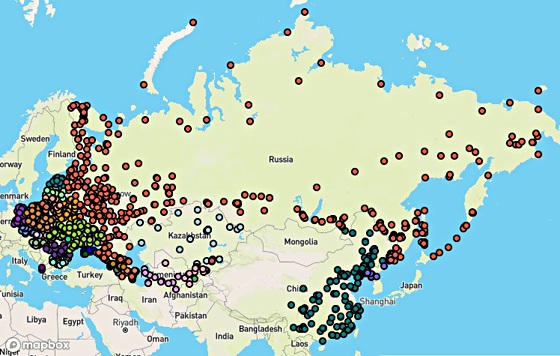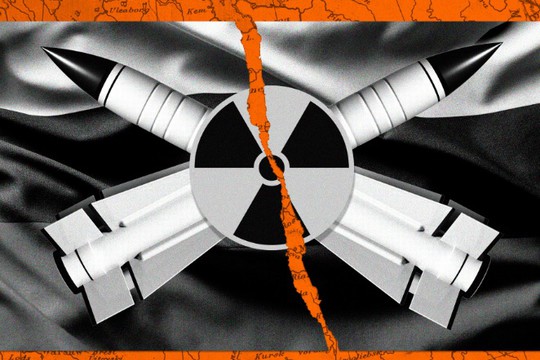Even against Russia and increasingly China, which now dominates US nuclear planning, the Pentagon and the Intelligence Community think that “a disarming first strike [against the US] will most likely not occur.” Yet, as over six decades ago, such assessments are subject to perceptions, which have resulted in several false arms since the 1960s; some of them potentially fatal, writes Dr. Dan Steinbock, a strategist of the multipolar world and the founder of Difference Group (Hong Kong), he has served at the India, China and America Institute (USA), Shanghai Institutes for International Studies (China) and the EU Center (Singapore).
On June 16, the 92-year-old Daniel Ellsberg passed away. At RAND, he contributed to a top-secret 47-volume study of classified documents on the Vietnam War. Even though the war had been acknowledged to be “unwinnable” since the 1950s, successive presidents from Eisenhower to Nixon had lied about the conflict.
Until recently, it was not known that Ellsberg also secretly copied files on Pentagon’s nuclear plans to “decapitate” Russia, China and our planet.
In May 2021, the New York Times released Ellsberg’s classified documents on the proposed nuclear attack on China amid tensions over the Taiwan Strait in 1958. Pentagon’s leaders were pushing for a first-strike option, despite their belief that the Soviet Union, China’s then-ally, could retaliate and millions of people would perish.
Urging President Biden and the Congress to take notice, Ellsberg was also weary of media apathy after his book The Doomsday Machine (2017).

As Ellsberg released copies of the classified documents, the 7,000 pages became known as the “Pentagon Papers.” However, from 1958 to 1971, his primary job had been as a nuclear war planner for Eisenhower, Kennedy, Johnson, and Nixon administrations.
In his view, nearly every US president from Truman to Trump has “considered or directed serious preparations for possible imminent US initiation of tactical or strategic nuclear warfare.” Most plans focused on Soviet Union, North Vietnam, North Korea, as well as Iraq, Iran, India, and Libya.
In the case of China, Beijing’s role in the Korean War (1950) and the Taiwan Strait crises (1954-55, 1958) triggered US nuclear plans.
Since the Ukraine conflict, the US and the NATO have associated Russia with China, which had no role in the invasion. By October 2022, the Biden administration unveiled a Cold War strategy for “nuclear threats from China and Russia.” In the process, historical realities were turned upside down.
According The Doomsday Machine, Ellsberg first learned about those realities reading a top-secret document based on President Kennedy’s question to the Joint Chiefs of Staff: “If your plans for general [nuclear] war are carried out as planned, how many people will be killed in the Soviet Union and China?” The total varied around 275 million to 325 million deaths. In fact, the US nuclear war plan sought the “destruction of China and Soviet Union as ‘viable’ societies.”
1,100 US Nuclear Targets in 1956:
 Source: Screen capture close-up of “Nukemap” by Future of Life Institute
Source: Screen capture close-up of “Nukemap” by Future of Life Institute
In 2016, The National Security Archives published a declassified list of US nuclear targets from 1956, which spanned 1,100 locations across Eastern Europe, Russia, China, and North Korea.
Worse, the nuclear strategy linked a “general war,” which would legitimize a first-strike against Soviet Union (and today Russia), and China, even if Beijing would have nothing to do with such conflict. So, Ellsberg asked the Chiefs, over the president’s signature, for a total breakdown of global deaths from US attacks.
Another 100 million deaths, roughly, were predicted in Eastern Europe, from direct attacks on Warsaw Pact bases and air defenses and from fallout. Perhaps 100 million more from fallout in Western Europe and still another 100 million in the mainly neutral countries adjacent to the Soviet bloc and China, including Finland, Sweden, Austria, Afghanistan, India, and Japan.
As Ellsberg discovered, deterring a surprise Soviet nuclear attack or responding to such an attack has never been the only or primary purpose of US nuclear plans and preparations. The real purpose is to limit the damage to the US from Soviet or Russian retaliation to a US first strike against the USSR or Russia.
If US plans for thermonuclear war will be carried out, that means “smoke and soot lofted by fierce firestorms in hundreds of burning cities into the stratosphere, where it would not rain out and would remain for a decade or more.” It would envelope the globe and block most sunlight. It would lower annual global temperatures to the level of the last Ice Age and kill all harvests worldwide, thereby “causing near-universal starvation within a year or two.”
Nuclear preparedness doesn’t come cheap. The projected costs of the US nuclear forces from 2021 to 2030 are expected to total $634 billion. Two-thirds of those costs will be incurred by the Department of Defense (DoD), with largest expenditure for ballistic missile submarines and intercontinental ballistic missiles. The Department of Energy’s (DOE) costs will be for nuclear weapons laboratories and supporting activities.
The key beneficiaries of these expenditures are the major contractors for new nuclear delivery vehicles and the operators of the national nuclear weapons complex. A small oligopoly of global contractors and operators – the Big Defense – will reap the profits. Northrop Grumman has identified major suppliers for its new ICBM in 32 states. Its 12 largest subcontractors include some of the nation’s most prominent defense companies, including Lockheed Martin, General Dynamics, L3Harris, Aerojet Rocketdyne, Honeywell, Bechtel, and the aerospace division of Raytheon.
From 2012 to 2020, these Big Defense conglomerates spent over $119 million in campaign contributions employing 380 lobbyists among them in 2020 alone.
Over two-thirds of the monies passed through the “revolving door” from top positions in Congress, the Pentagon, and the Department of Energy to work for nuclear weapons contractors as executives or board members, and vice versa. Typically, secretaries of defense – including James Mattis (General Dynamics); Mark Esper (Raytheon); and Lloyd Austin (Raytheon) – have served as lobbyists or board members of major nuclear weapons contractors before the Pentagon.
Additionally, the Big Defense spends millions of dollars in supporting think-tanks for “independent analysis” on nuclear weapons. Licking the hand that feeds them, the think-tanks, in return, push for increasing nuclear investment in Russia’s near-abroad and Asia via the trilateral US-UK-Australia security pact AUKUS, Dr. Dan Steinbock writes.
read more in our Telegram-channel https://t.me/The_International_Affairs

 11:18 31.08.2023 •
11:18 31.08.2023 •























